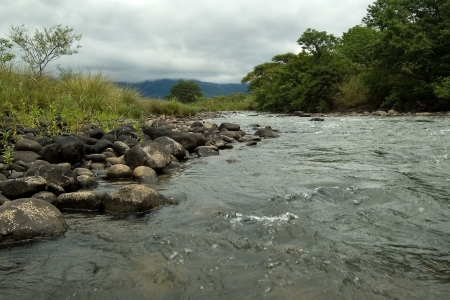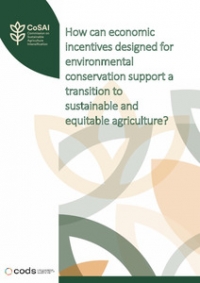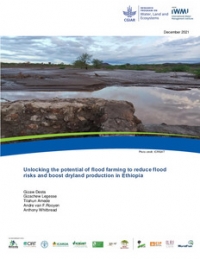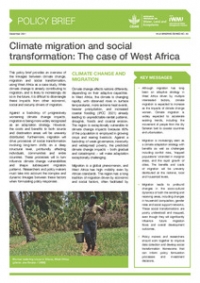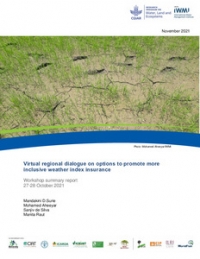Across the globe, governments and investors are making water governance decisions that have huge environmental and social impacts, not only for today, but for generations to come. All too often, these decisions are framed and made with limited engagement with local communities. In order to ensure community involvement in water governance, new solutions are emerging that bring all actors together in the decision making process.
A new book examines this collective action, and shows how it can provide us with a better definition of development that ensures its benefits and risks are shared more fairly.
The puzzle of governing shared water resources
Shared water resources are often complex ‘problems,’ and decisions about them need to balance a range of interests: promoting economic growth, decreasing poverty, ensuring water and food security, maintaining peace and security, and ensuring a certain degree of environmental protection.
These divergent incentives pull at shared resources and often create competition among different user groups. Government agencies, private sector actors, transnational environmental movements, international donors and local communities themselves are among those involved.
![]()
Our recently published book Water Governance and Collective Action: Multi-scale Challenges, puts collective action at the center of an essential water governance challenge: delivering sustainable development and global environmental benefits. While water governance scholars have brought to light the cultural, ethical, and to a certain extent political dimension in water governance, their analyses infrequently explain how people come together for collective action, what motivates such action in the first place, and how these actions derive from existing power structures and power relationships.
Achieving effective collective action - in which all stakeholders are involved - requires balancing interests and focusing on common goals. Whether at the level of local community, watershed or international basin, collective action is a major global challenge.
To gain a grounded understanding of this challenge, our book addresses the current gap in water governance discourse through a rigorous comparative analysis and systematic compilation of case studies at different scales. These studies span different thematic areas (irrigation, hydropower, aquatic agricultural system, gender, transboundary waters) and geographies (including Asia, Africa, and Latin America).
Focused on Foucault: ‘Power is Everywhere’
Building on a Foucaultian concept that ‘power is everywhere,’ the book places power and politics at the center of collective action and water governance discourse, while addressing three core questions:
1) How is collective action shaped by existing power structures and relationships at different scales? (e.g. local, national, transboundary, or regional challenges)
2) What are the kinds of tools, methods, options, pathways and possible approaches that various actors can take and adopt towards more deliberative processes for collective action?
3) What are the anticipated outcomes for development processes, the environment and the global resource base of achieving collective action across scales?
These questions link community-based management of water resources with national decision-making landscapes, transboundary water governance, and global policy discussion on sustainable development. Aiming to further the current debates on water governance and collective action, three key themes emerge:
1) Power Structure and Power Relationships Shaping the Commons
Management of common resources at the local level has become closely entangled with development and investment decisions made at larger scales. For this reason, the commons cannot be analyzed in isolation from the wider power structure and power relationships in which they are embedded. For example, two cases in the book illustrate how decisions on land concessions for gold mining in Mexico and hydropower dam construction in Cambodia are made by powerful actors far off-site. Government officials, politicians, private developers, and international agencies follow different sets of rationales and objectives. Unfortunately, they don’t always incorporate local communities’ livelihood options and development aspirations.
Development decisions are often presented under the pretext of a government's’ overall strategy to promote rapid economic growth, increase government revenue, and support industrialization. However, they rely on national policy and legal frameworks as entry points of political leverage. Such decisions affect the commons and the ability of local communities to govern their surrounding natural resources sustainably. This creates potential governance traps and shapes processes of inclusion and exclusion, namely, how development benefits and risks are distributed and shared.
2) Collective Action and the Shaping of Strategic Alliances
Powerful and less powerful actors shape actual management of the commons through various means, ranging from community mobilization to policy negotiation across scales. The book exemplifies this by diving into case studies of a community health impact assessment conducted in Thailand, a multi-scalar policy discussion to strengthen fisheries in Cambodia, and creating space for dialogue through media collectives in the Indus Basin.
Different forms of collective action - whether it is grassroots driven, state and non-state-based, or part of transnational rights movements - rely on strategic alliances. Strategic alliances take shape in many ways, from grassroots scalar politics, to inter-class and network alliances. It is key to understand how different types of strategic alliances emerge and evolve as they create institutions and affect collective action
3) Pathways towards Deliberative and Just Water Governance
The commodification of nature often adversely affects local communities, highlighting the need to reintroduce a new system of values in economic development and globalization discourse pertaining to justice, diversity, and equity.
In the context of hydropower development, this would mean incorporating local communities’ and local authorities’ development needs and aspirations into the overall process of decision making. Discussions on benefit sharing mechanisms should not only be centered on how revenue from hydropower development is redistributed, but should also position hydropower as a means to generate equitable access to electricity for local communities. Decision-making needs to move beyond the current focus on electricity production for export.
Similarly, current debates on economic development and integration tend to position large infrastructure projects as governments’ means to promote economic growth and reduce poverty. However, economic growth in developing countries should be tied more closely to local communities’ livelihood options and strategies.
We anticipate these and other challenges will intensify as pressures on water management grow in coming years. The book forms a contribution to understanding and interpreting forms of collective action while triggering new ways of exploring the practice of collective action in critical development spaces.






